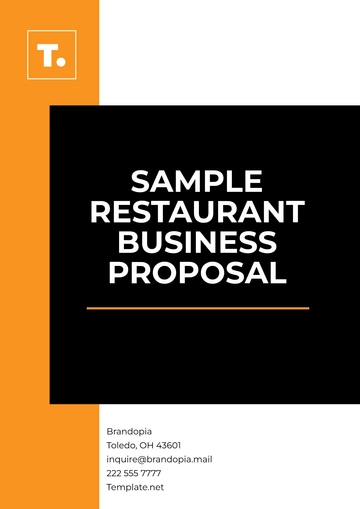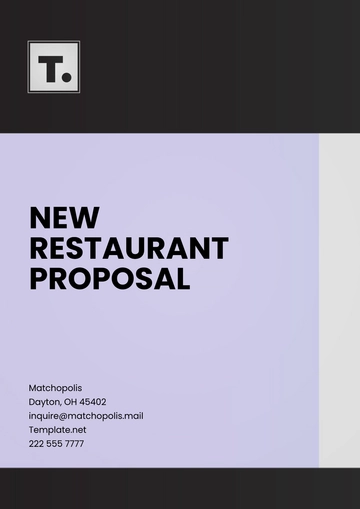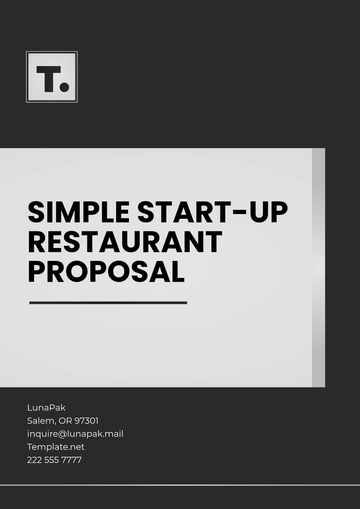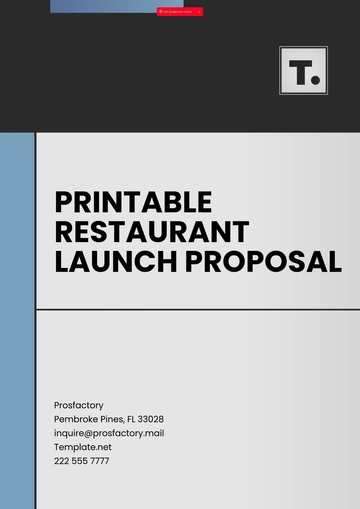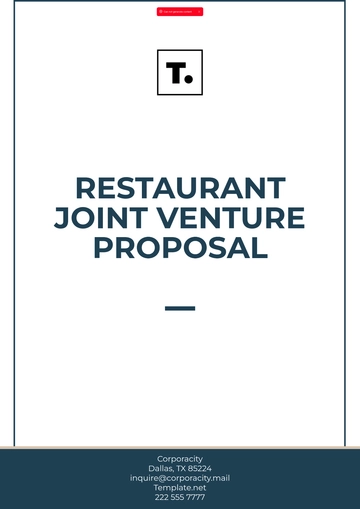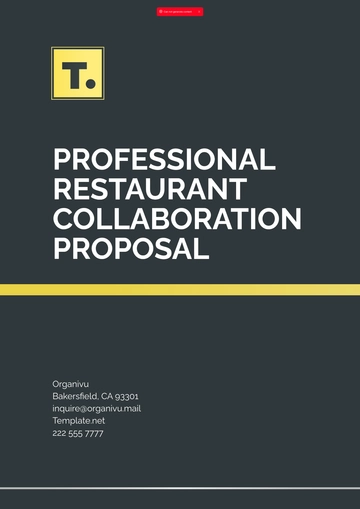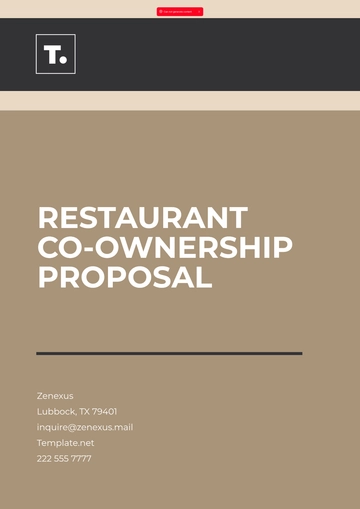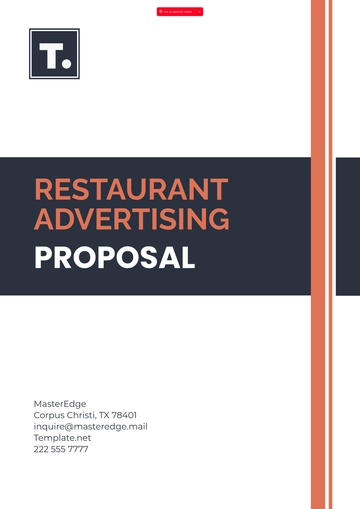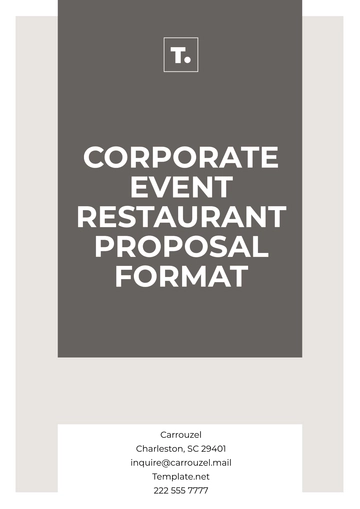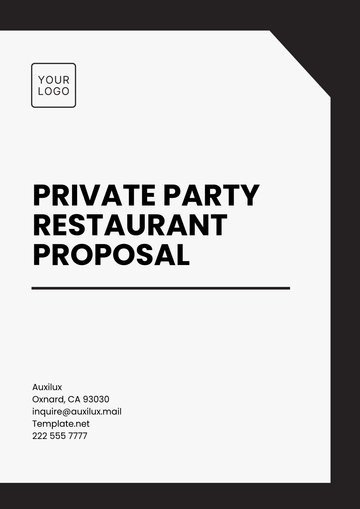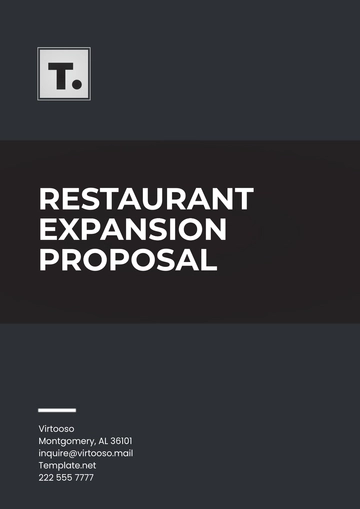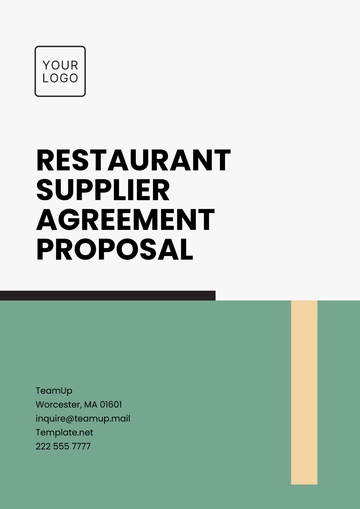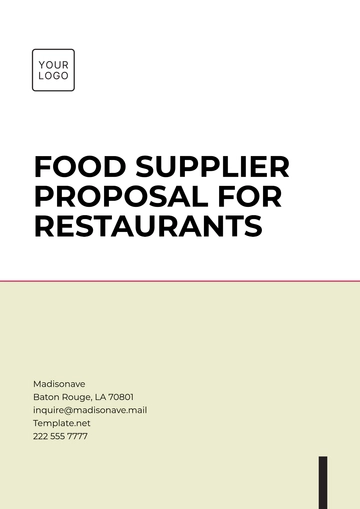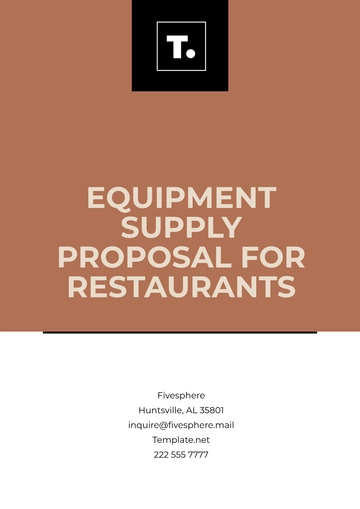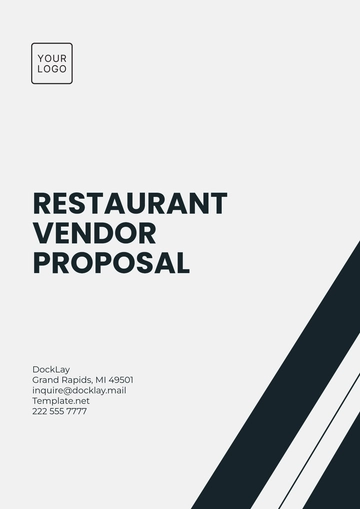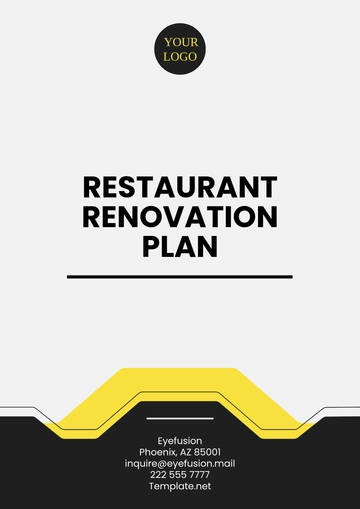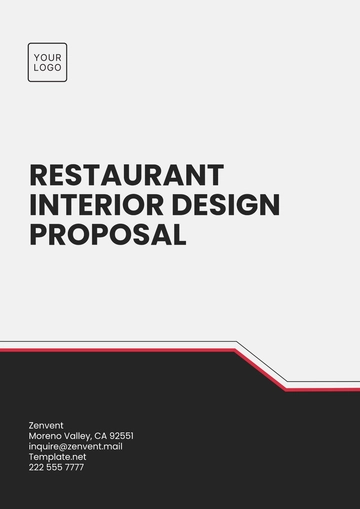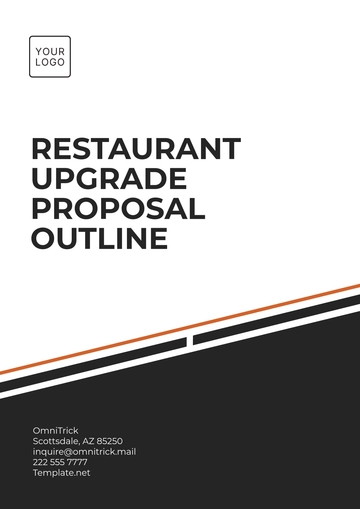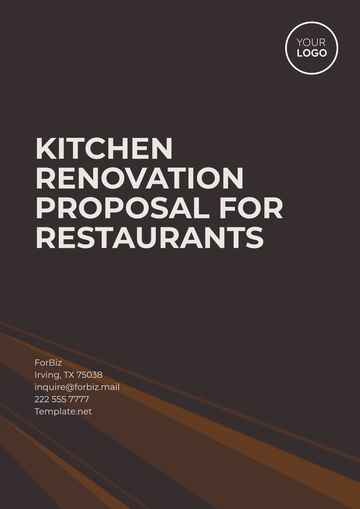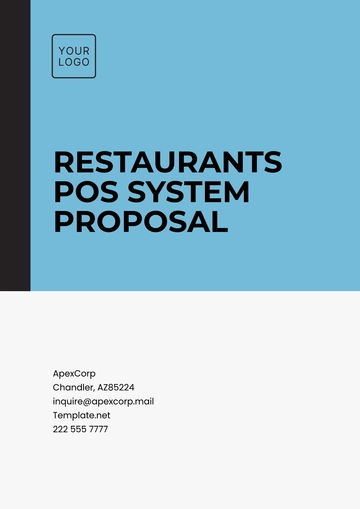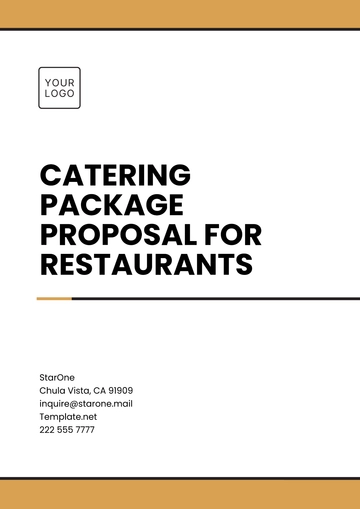Free Budget Proposal for Restaurant Business
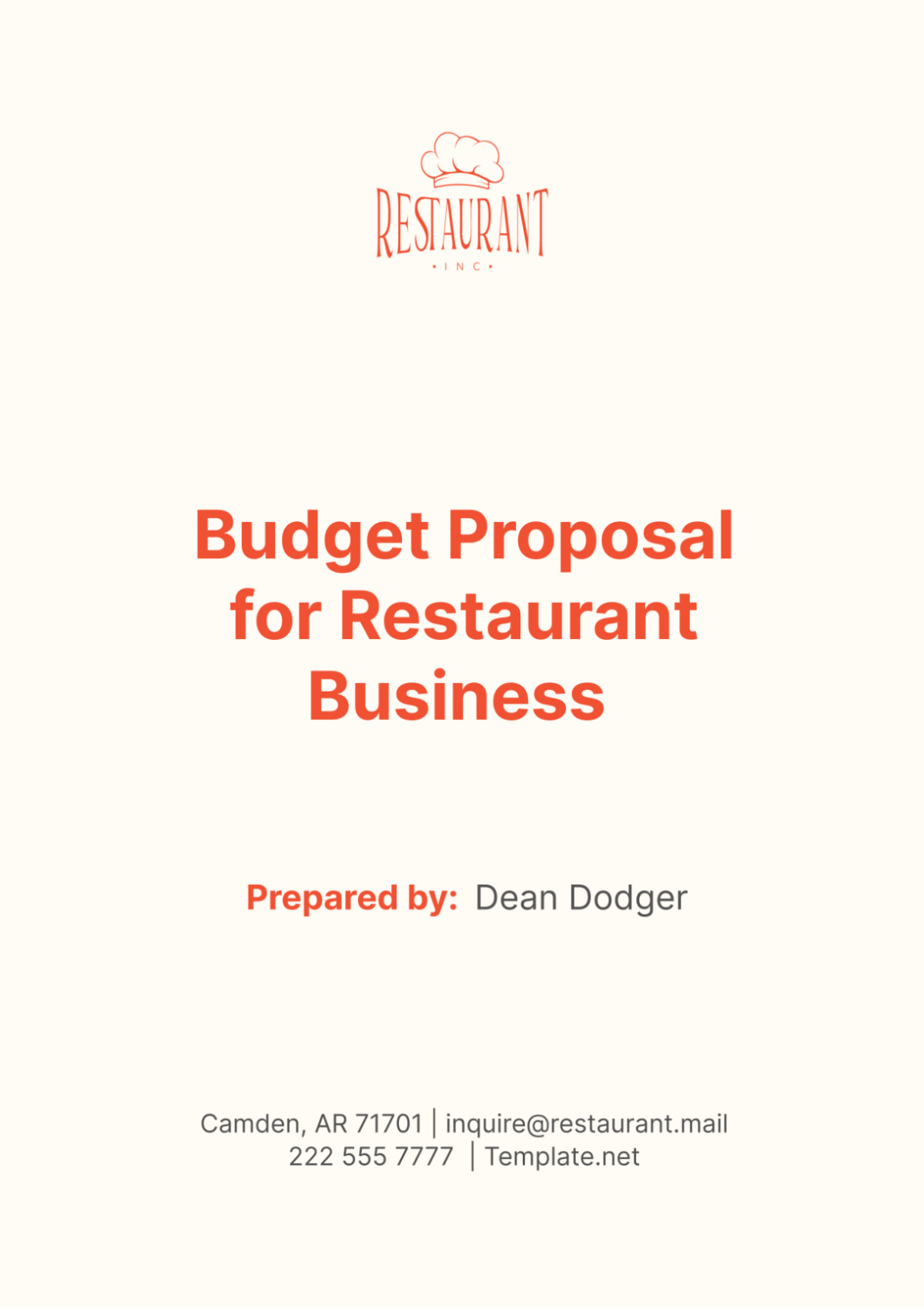
I. Introduction
A. Purpose of the Budget Proposal
The primary objective of this Budget Proposal document is to provide a detailed financial blueprint for [Your Company Name] for the forthcoming fiscal year. The proposal has been crafted with the intent to efficiently allocate financial resources, oversee and control operational costs, and enhance revenue streams. By focusing on these aspects, we aim to safeguard the financial stability and promote the overall success of the restaurant.
B. Overview of the Restaurant Business
[Your Company Name] operates as a comprehensive service-oriented restaurant based in the heart of [City, State]. With a specialization in a diverse range of Asian culinary traditions, our establishment has dedicated [number] years towards serving the local community. We at [Your Company Name] take great pride in our commitment to delivering outstanding quality in the meals we prepare, ensuring exceptional customer service, and maintaining a warm and inviting atmosphere for all our guests.
II. Budget Overview
A. Explanation of Budgeting Process
The budgeting process for [Your Company Name] involves forecasting revenues and estimating expenses for the upcoming fiscal year. This process includes analyzing past financial data, market trends, and operational needs to create a comprehensive budget that aligns with the restaurant's goals and objectives.
B. Budget Goals and Objectives
The primary objective of the budget for [Your Company Name] is centered on attaining profitability, while simultaneously upholding superior standards of quality and service. To achieve this, the budget plans involve an increase in revenue, which will be accomplished through carefully designed strategic pricing and targeted marketing initiatives aimed at boosting customer engagement and sales. Furthermore, there is a focus on controlling and reducing costs by enhancing the efficiency of operational processes. Additionally, the budget prioritizes the optimal allocation of resources to ensure that every expenditure is directed towards areas that will yield the most substantial benefit, thereby supporting the overall financial health and strategic goals of the company.
C. Timeline for Budget Implementation
The budget designated for [Your Company Name] is scheduled to be put into effect at the start of the upcoming fiscal year, which commences on [start date]. Over the course of the year, this budget will undergo continuous monitoring and will be subject to adjustments where necessary. This is to guarantee that all financial objectives set by the company are successfully achieved.
III. Revenue Projections
A. Sales Forecast
The sales forecast for [Your Company Name] is based on historical sales data, market trends, and anticipated changes in the local economy. We anticipate a moderate increase in sales revenue due to planned marketing campaigns and menu innovations.
B. Pricing Strategy
Our pricing strategy is meticulously designed to deliver exceptional value to our customers while also securing the profitability of our restaurant. We engage in frequent evaluations and make necessary adjustments to our menu prices. These adjustments are informed by a range of factors including the fluctuating costs of food ingredients, the pricing strategies of competing dining establishments, and the evolving demands of our customers.
C. Marketing and Promotion Plans
[Your Company Name] has developed a strategic plan aimed at driving sales and enhancing the visibility of our brand. The strategy includes the deployment of several targeted marketing and promotional campaigns designed to appeal to specific segments of the market. As part of this comprehensive effort, the company intends to focus on advanced digital marketing techniques, leverage social media platforms for effective advertising, and organize special events that not only draw in new customers but also foster loyalty among our existing clientele. These initiatives are expected to play a crucial role in broadening our customer base and reinforcing our market presence.
D. Other Revenue Sources
In addition to generating income from standard dining operations, [Your Company Name] is committed to broadening its financial base and augmenting its overall revenue by tapping into several supplementary revenue streams. These will include offering catering services, hosting private events, and engaging in the sale of branded merchandise. This strategic expansion into diverse income avenues is aimed at enhancing the financial robustness and growth prospects of the company.
IV. Expense Projections
A. Cost of Goods Sold (COGS)
The cost of goods sold for [Your Company Name] encompasses the expenses associated with procuring raw materials, ingredients, and packaging, which are essential for the preparation of our menu offerings. In order to ensure the sustained profitability of our business, we will maintain diligent oversight on the costs of our food supplies and make necessary adjustments to our menu pricing as required.
B. Operating Expenses
The operating expenses for [Your Company Name] encompass various costs such as rent, utilities, insurance, and additional expenditures that are essential for the daily functioning of the restaurant. In an effort to reduce these expenses, we are committed to implementing strategies that enhance operational efficiency and incorporate measures that will lead to significant cost savings.
C. Payroll Expenses
Payroll expenses constitute a major financial expenditure for [Your Company Name], reflecting our commitment to providing our employees with competitive wages and comprehensive benefits. In our ongoing efforts to manage these costs effectively, we will maintain vigilant oversight of labor expenses and make necessary adjustments to staffing levels in order to keep these costs under control.
D. Other Expenses
Other expenses incurred by [Your Company Name] encompass marketing expenses, maintenance fees, and administrative costs. We will systematically prioritize these expenses based on their respective impacts on the operations and profitability of the restaurant.
V. Budget Allocation
A. Allocation of Funds to Various Departments
The allocation of funds to various departments within [Your Company Name] is crucial for maintaining operational efficiency and achieving financial goals. The following table outlines the proposed budget allocation for each department:
Department | Budget Allocation ($) | Percentage of Total Budget |
|---|---|---|
Kitchen | $50,000 | 25% |
Front of House | $30,000 | 15% |
Marketing | $20,000 | 10% |
Administrative | $40,000 | 20% |
Contingency Fund | $20,000 | 10% |
Total | $160,000 | 100% |
Kitchen: The kitchen is the heart of [Your Company Name], responsible for food preparation, quality control, and inventory management. The budget allocation for the kitchen includes food costs, kitchen staff wages, equipment maintenance, and other related expenses. We aim to optimize kitchen operations to minimize waste and maximize efficiency.
Front of House: The front of the house encompasses all customer-facing areas, including dining rooms, bars, and host stands. The budget allocation for the front of house includes wages for servers and hosts, dining room maintenance, and customer service initiatives. We will focus on providing exceptional customer experiences to drive repeat business.
Marketing: Marketing plays a crucial role in attracting new customers and retaining existing ones. The budget allocation for marketing includes expenses for advertising, promotions, social media management, and customer engagement programs. We will leverage digital marketing channels to reach a wider audience and increase brand awareness.
Administrative: The administrative department oversees the day-to-day operations of [Your Company Name], including HR, finance, and legal matters. The budget allocation for administration includes salaries for administrative staff, office supplies, software subscriptions, and other administrative expenses. We will streamline administrative processes to reduce costs and improve efficiency.
Contingency Fund: The contingency fund is set aside to cover unforeseen expenses that may arise during the fiscal year. This fund provides financial security and flexibility to address unexpected challenges without compromising the overall budget.
B. Contingency Planning for Unexpected Expenses
In addition to the contingency fund, [Your Company Name] will implement proactive measures to mitigate the impact of unexpected expenses. This includes regular maintenance of equipment to prevent breakdowns, monitoring of market trends to anticipate cost fluctuations, and cross-training of staff to ensure flexibility in staffing levels.
By allocating funds strategically and implementing contingency planning, [Your Company Name] aims to maintain financial stability and operational excellence in the upcoming fiscal year. We are confident that this budget allocation plan will support our goal of achieving profitability while delivering exceptional experiences to our customers.
VI. Budget Monitoring and Control
A. Methods for Monitoring Budget Performance
Monitoring the budget for [Your Company Name] is essential to ensure that financial goals are met and resources are allocated efficiently. The following methods will be used to monitor budget performance:
Regular Financial Reports: Monthly and quarterly financial reports will be generated to compare actual revenue and expenses against budgeted amounts. Discrepancies will be investigated, and corrective actions will be taken if necessary.
Variance Analysis: Variances between budgeted and actual amounts will be analyzed to identify the reasons for discrepancies. This analysis will help in adjusting future budgets and improving financial performance.
Budget Meetings: Regular budget meetings will be held to review financial performance, discuss any challenges or opportunities, and make adjustments to the budget as needed.
Budget Software: [Your Company Name] will utilize budgeting software to track expenses, monitor cash flow, and generate financial reports. This software will provide real-time insights into the restaurant's financial health.
B. Adjustments and Revisions to the Budget
The budget for [Your Company Name] will be a dynamic document that is subject to adjustments and revisions throughout the fiscal year. The following circumstances may warrant adjustments to the budget:
Changes in Revenue Projections: If actual sales deviate significantly from the forecasted sales, the budget may need to be revised to reflect the new revenue projections.
Cost Savings Opportunities: Identifying cost-saving opportunities through efficiency improvements or renegotiating supplier contracts may lead to budget adjustments.
Market Trends: Changes in market trends or economic conditions may require adjustments to the budget to adapt to new business realities.
Emergencies or Unexpected Expenses: Unforeseen circumstances such as equipment breakdowns or regulatory changes may necessitate budget revisions to accommodate these expenses.
C. Reporting and Accountability
To ensure accountability and transparency, [Your Company Name] will implement the following reporting mechanisms:
Financial Reports: Monthly and quarterly financial reports will be distributed to key stakeholders, including management and investors, to provide an overview of the restaurant's financial performance.
Budget Variance Reports: Variance reports comparing budgeted and actual amounts will be prepared and shared with relevant stakeholders to track performance against targets.
Budget Meetings: Regular budget meetings will be held to discuss financial performance, review budget projections, and make any necessary adjustments to the budget.
Internal Controls: Internal controls will be implemented to prevent fraud and ensure that expenses are properly authorized and recorded.
VII. Conclusion
A. Summary of Budget Proposal
The budget proposal for [Your Company Name] is designed to ensure the financial health and success of the restaurant. By carefully monitoring expenses, maximizing revenue, and implementing cost-saving measures, we are confident that [Your Company Name] will achieve its financial goals in the upcoming fiscal year.
B. Next Steps in Budget Implementation
What follows in budget implementation includes finalizing the budget, communicating it to all relevant stakeholders, and monitoring performance against targets. Regular reviews and adjustments will be made to ensure that the budget remains aligned with the restaurant's goals and objectives.
C. Contact Information for Questions or Feedback
For questions or feedback regarding the budget proposal for [Your Company Name], please contact [Your Name] at [Your Company Email] or [Your Company Number].
- 100% Customizable, free editor
- Access 1 Million+ Templates, photo’s & graphics
- Download or share as a template
- Click and replace photos, graphics, text, backgrounds
- Resize, crop, AI write & more
- Access advanced editor
Manage your finances with Template.net's Budget Proposal for Restaurant Business Template. This customizable and editable template, accessible through the Ai Editor Tool, helps you outline your restaurant’s budget effectively. Personalize it to detail projected expenses and revenues. Create a comprehensive budget proposal to guide your financial planning and ensure your restaurant's economic stability and growth.
You may also like
- Business Proposal
- Research Proposal
- Proposal Request
- Project Proposal
- Grant Proposal
- Photography Proposal
- Job Proposal
- Budget Proposal
- Marketing Proposal
- Branding Proposal
- Advertising Proposal
- Sales Proposal
- Startup Proposal
- Event Proposal
- Creative Proposal
- Restaurant Proposal
- Blank Proposal
- One Page Proposal
- Proposal Report
- IT Proposal
- Non Profit Proposal
- Training Proposal
- Construction Proposal
- School Proposal
- Cleaning Proposal
- Contract Proposal
- HR Proposal
- Travel Agency Proposal
- Small Business Proposal
- Investment Proposal
- Bid Proposal
- Retail Business Proposal
- Sponsorship Proposal
- Academic Proposal
- Partnership Proposal
- Work Proposal
- Agency Proposal
- University Proposal
- Accounting Proposal
- Real Estate Proposal
- Hotel Proposal
- Product Proposal
- Advertising Agency Proposal
- Development Proposal
- Loan Proposal
- Website Proposal
- Nursing Home Proposal
- Financial Proposal
- Salon Proposal
- Freelancer Proposal
- Funding Proposal
- Work from Home Proposal
- Company Proposal
- Consulting Proposal
- Educational Proposal
- Construction Bid Proposal
- Interior Design Proposal
- New Product Proposal
- Sports Proposal
- Corporate Proposal
- Food Proposal
- Property Proposal
- Maintenance Proposal
- Purchase Proposal
- Rental Proposal
- Recruitment Proposal
- Social Media Proposal
- Travel Proposal
- Trip Proposal
- Software Proposal
- Conference Proposal
- Graphic Design Proposal
- Law Firm Proposal
- Medical Proposal
- Music Proposal
- Pricing Proposal
- SEO Proposal
- Strategy Proposal
- Technical Proposal
- Coaching Proposal
- Ecommerce Proposal
- Fundraising Proposal
- Landscaping Proposal
- Charity Proposal
- Contractor Proposal
- Exhibition Proposal
- Art Proposal
- Mobile Proposal
- Equipment Proposal
- Student Proposal
- Engineering Proposal
- Business Proposal

